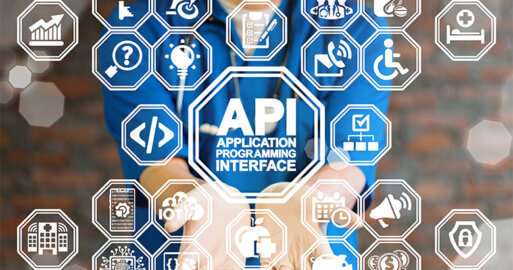SAP S/4HANA Migration: Take the green pill or the brown pill?

Start afresh with a greenfield approach, or build upon what you have already with a brownfield approach? This is no doubt a difficult decision to take when migrating to SAP S/4HANA. Learn what to consider when looking at this from not only a B2B/EDI perspective, but also from a general integration perspective.
SAP S/4HANA Migration: Greenfield vs. Brownfield
With SAP’s end-of-support deadline for Business Suite 7 software in 2027, SAP ECC (ERP Central Component) customers need to decide what to do. The vast majority plan to migrate to S/4HANA.
S/4HANA represents a fundamental change (both functionally and technically) regardless as to which version of SAP ECC or other ERP system is used today. Due to this fundamental change, migration to S/4HANA will be a major undertaking. Each customer’s situation is unique, and as such the migration journey plan should be thoroughly researched and thought through.
Greenfield S/4HANA Migration is a New Separate Setup
Starting with a greenfield means either a customer is new to SAP (never implemented before) or has probably been running SAP ECC for quite some time. Such a green and fresh S/4HANA migration is the opportunity to rationalize historically grown software platforms into a coherent new landscape, with the adoption of new and proven business practices with the following benefits:
- Smaller Scope >>> Shorter Projects >>> Faster ROI
- Migration of available master data and possibly runtime data is comparably easy
However, there are several trade-offs:
- Any customization will need to be manually reimplemented
- A brand new system will need integrating with the current environment
- Day-to-Day operation of SAP ECC (if already in place) is difficult to maintain and difficult to switch-out at the ideal time
This makes a greenfield migration more suitable for new, smaller customers with smaller project requirement scopes. From an integration perspective, a new ERP system with new integration requirements typically requires new connections to be on-boarded and tested during the project.
Implementing connections on a central platform and just plugging in S/4HANA is ideal. With a Hybrid Integration Platform (HIP) strategy, this part of the SAP S/4HANA migration is achieved with expediency.
Brownfield S/4HANA Migration is a Conversion of the Existing SAP ECC Landscape
Starting with a brownfield will likely be longtime adopters of SAP ECC who want to keep the structure they already have in place and to migrate it to run under S/4HANA. This makes brownfield a classic migration project and provides an updated platform with the following benefits:
- Protect customization investment (partly)
- Incumbent architecture can remain the same (to a degree)
- Users can be persuaded easier
- Day-to-Day operations can continue until the switchover
- The switchover can be phased (not big bang)
However, there are several trade-offs:
- S/4HANA doesn’t cover all industry specific functions
- Impact on customizations
- Changes still require retraining
- Parallel operation of SAP ECC and SAP S/4HANA causes extra effort
A so called bluefield migration for SAP S/4HANA is practically a brownfield migration on steroids. Bluefield SAP S/4HANA migration expands the typical brownfield migration with more specialized tools which are available from SAP and other tool vendors. Integration-wise there is no real difference between bluefield and brownfield.
The brownfield migration to SAP S/4HANA is suitable for the vast majority of the installed base. From an integration perspective, running all the inherited connections to SAP ECC and the new S/4HANA in parallel for a period of time has its own challenges. This is because changes will involve third parties and will add complexity to the overall migration plan.
For a brownfield migration it is very helpful to run connections over a central platform and just re-plug the ERP connection from SAP ECC to S/4HANA. With a Hybrid Integration Platform strategy, migration to SAP S/4HANA can be accomplished a lot easier.
Learn more about Migration and Integration of SAP S/4HANA here.
SEEBURGER’s Hybrid Integration Platform supports all API and B2B Interfaces for SAP S/4HANA
SEEBURGER’s BIS platform is a Hybrid Integration Platform which includes seamless API integration with internal and external business partners via new SAP APIs and proven B2B/EDI or Managed File Transfer channels. This includes the seamless integration of SAP S/4HANA via the SAP API Business Hub.
SEEBURGER is thus in a position to provide companies with sustainable support for their digitalization initiatives regardless if the way to SAP S/4HANA starts on a greenfield or a brownfield.
Thank you for your message
We appreciate your interest in SEEBURGER
Get in contact with us:
Please enter details about your project in the message section so we can direct your inquiry to the right consultant.
Written by: Frank Stegmueller
Frank Stegmüller is one of the two corporate information security officers at SEEBURGER and has been with the company since 2008. He has over 25 years of experience in service, support and information security for Enterprise Application Integration, EDI, B2B, MFT, API, ITSM and digital transformation - both on in-house systems and from the cloud. He is involved in the ISO/IEC 27001, ISAE 3402 (SOC 1) Type 2 and TISAX certification for SEEBURGER Cloud Services and knows all about the intricacies of compliant data centre operations in international environments.





